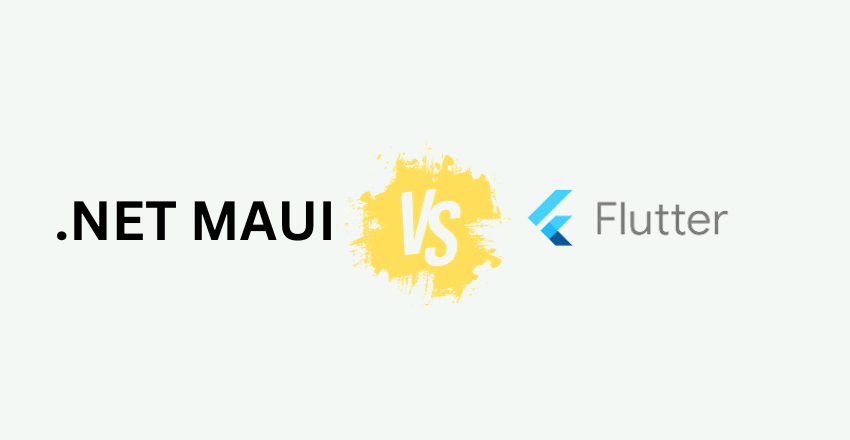 .NET MAUI vs Flutter – Deciding between .NET MAUI and Flutter? Compare their capabilities in creating responsive UI, speed of development, and platform support to make an informed choice.
.NET MAUI vs Flutter – Deciding between .NET MAUI and Flutter? Compare their capabilities in creating responsive UI, speed of development, and platform support to make an informed choice.
With many cross-platform frameworks available, it can be challenging to decide which one to use for your project. Two popular options are .NET MAUI and Flutter, both widely used for building multi-platform applications.
If you’re trying to decide between these two frameworks, read on to compare their features, performance, development workflow, community support, ecosystem, learning curve, industry adoption, and more.
Key Takeaways
- .NET MAUI and Flutter are popular cross-platform frameworks for developing multi-device applications.
- .NET MAUI is developed by Microsoft and Flutter by Google.
- Compare their features, performance, development workflow, community support, ecosystem, and learning curve to make an informed decision for your project.
Introduction to .NET MAUI
.NET MAUI is a powerful cross-platform framework developed by Microsoft, designed to make it easier for developers to create multi-platform applications. It is an evolution of Xamarin.Forms, offering improved performance, productivity enhancements, and a more streamlined development process for building applications across various platforms.
One of the primary benefits of .NET MAUI is its ability to create cross-platform applications with a single codebase for different platforms without sacrificing performance or the user experience. This allows developers to write the code once and deploy it across multiple platforms, including iOS, Android, Windows, macOS, and Linux.
Additionally, .NET MAUI offers a wide range of UI components, layout systems, and data binding capabilities, making it easy to create beautiful and responsive user interfaces. Moreover, .NET MAUI provides seamless integration with native APIs, allowing developers to access device-specific features and functionalities, providing a native-like experience for the users.
Introduction to Flutter
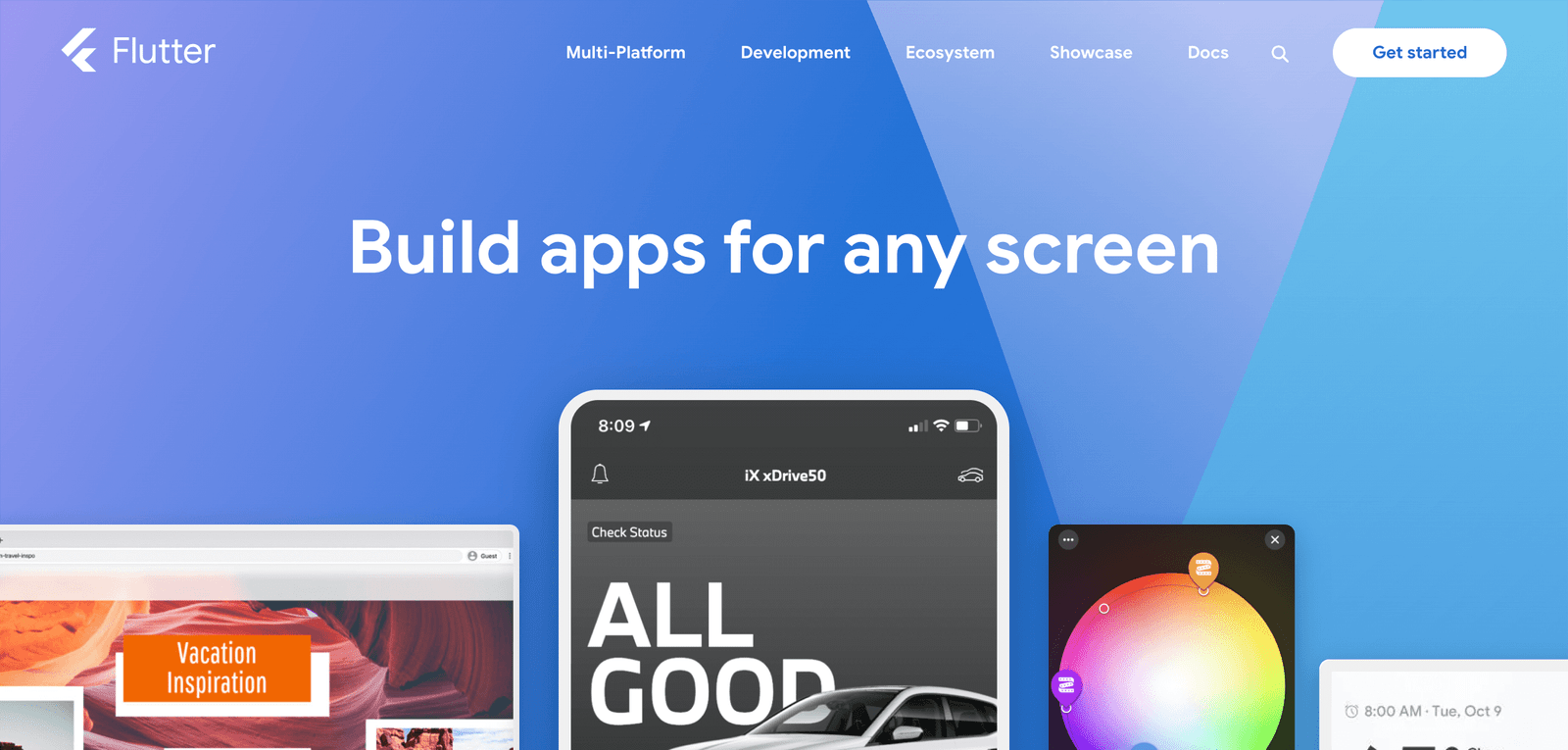
Flutter is a cross-platform framework developed by Google that has gained significant popularity in recent years. Its approach is unique, using a single codebase to build applications for multiple platforms. This allows developers to easily create and maintain apps for both iOS and Android, as well as web and desktop.
With Flutter, developers can use a single programming language, Dart, to build their applications. This provides a consistent development experience and allows for faster iteration and testing. Dart is a fast and efficient language, optimized for client-side development, and offers features such as strong typing and asynchronous programming.
Flutter is known for its rich set of UI widgets, which give developers fully customizable options for building beautiful and responsive user interfaces. It also offers animations, graphics rendering, and support for multilingual apps. Since it is an open-source project, developers can take advantage of the vast community-driven library, plugins, and extensions, which can help to reduce development time and make the development process smoother.
Feature Comparison
When considering a cross-platform framework, it’s essential to understand the features offered by each. Both .NET MAUI and Flutter have distinct advantages and differences that you should consider when choosing the right one for your project. Let’s examine some of the key features of each framework below.
.NET MAUI Features
| Feature | Description |
|---|---|
| UI Components | .NET MAUI provides a rich set of customizable UI components, including labels, buttons, text boxes, and more. |
| Layout System | The framework offers built-in layouts such as StackLayout, GridLayout, and FlexLayout to simplify building cross-platform user interfaces. |
| Navigation | NET MAUI provides a navigation stack that allows for navigation between pages, master-detail views, and tabbed views. |
| Data Binding | The framework allows for data binding between views and data models, making it easy to display, update and manage data. |
| Integration with Native APIs | .NET MAUI offers a seamless integration with native APIs, providing access to platform-specific features such as fingerprint sensors, camera, and more. |
.NET MAUI also offers a wealth of features for developers, including a robust toolset, intuitive IDE, and support for multiple platforms such as Android, iOS, and desktop.
Flutter Features
| Feature | Description |
|---|---|
| UI Components | Flutter provides a set of beautiful and customizable UI components, including Material Design and Cupertino widgets. |
| Layout System | Flutter’s flexible layout system uses a powerful widget tree to build user interfaces, allowing for complex designs and animations. |
| Navigation | The framework offers a navigation stack for managing multiple views, along with named routes for easier navigation within the app. |
| Data Binding | Flutter offers reactive programming, allowing developers to build data-driven user interfaces quickly and efficiently. |
| Integration with Native APIs | Flutter allows developers to access native features using platform channels, making it easy to integrate with device-specific features and APIs. |
Flutter’s unique approach of using a single codebase for multiple platforms simplifies development and offers instant hot-reload for faster development cycles. It also has strong community support and is widely used in the industry for building mobile and web applications.
Ultimately, the choice between .NET MAUI and Flutter will depend on your specific project requirements and preferences, with both frameworks offering a rich set of features and advantages for cross-platform development.
Performance Comparison
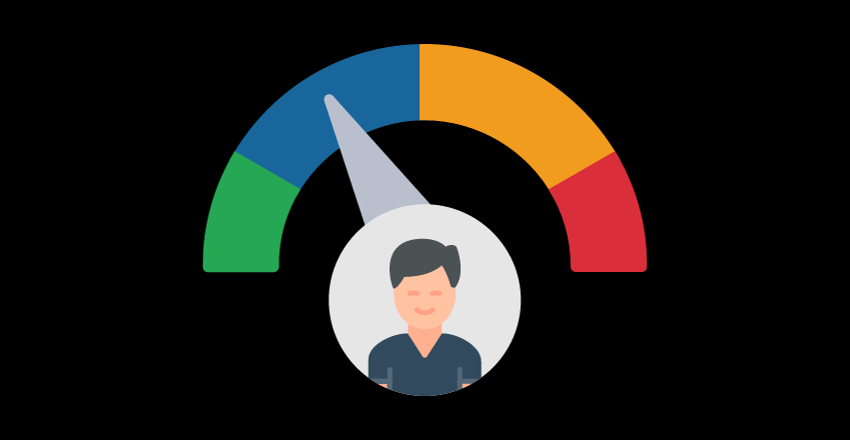
When it comes to cross-platform app development, performance is a crucial factor to consider. Let’s compare the performance of .NET MAUI and Flutter, and see how they fare against each other.
| Framework | Startup Time | Rendering Speed | Memory Usage |
|---|---|---|---|
| .NET MAUI | Fast | Smooth | Low |
| Flutter | Slow | Fast | High |
As shown in the comparison table, .NET MAUI has faster startup time, smoother rendering, and lower memory usage compared to Flutter. On the other hand, Flutter has faster rendering speed but consumes more memory and has slower startup time.
It’s important to note that performance can vary based on the complexity of the application and the number of devices it’s running on. However, benchmarks and case studies have consistently shown that .NET MAUI outperforms Flutter in several areas.
Performance Optimization
To further improve the performance of applications built with .NET MAUI or Flutter, developers can implement various performance optimization techniques. These include:
- Code optimization
- Caching
- Asynchronous programming
- Efficient resource handling
Developers can also use platform-specific tools and features to optimize performance for each specific platform. For example, iOS and Android have different performance optimization techniques due to their different resource limitations and hardware configurations.
By implementing these techniques and considering platform-specific optimization, developers can significantly improve the performance of their applications and provide a better user experience.
Development Workflow

Both .NET MAUI and Flutter offer a smooth development workflow, with efficient coding experiences and tools to simplify the development process.
For .NET MAUI, developers can use Visual Studio to write code with an easy-to-use drag-and-drop interface, as well as Xamarin.Forms Previewer to preview app interfaces live. Debugging is also simplified with Visual Studio, allowing for easy identification and resolution of errors. Additionally, .NET MAUI has built-in support for data binding, making it easier to connect the UI components to the backend data.
Flutter, on the other hand, uses its own programming language, Dart, and the Flutter SDK comes with its own set of development tools, such as Flutter Inspector and Flutter DevTools. One notable feature of Flutter is its Hot Reload functionality, allowing developers to see changes to the code in real-time without having to stop and restart the app. Debugging is also a breeze in Flutter, with the ability to step through code and identify any issues.
In terms of coding experience, both frameworks provide an intuitive and productive experience for developers and offer a range of tools to streamline the development process.
Community and Documentation
When considering which cross-platform framework to use, it’s important to take into account the level of community support and documentation available. Both .NET MAUI and Flutter have active communities and extensive documentation, but there are some differences to be aware of.
.NET MAUI Community
The .NET MAUI community includes developers from around the world who are dedicated to advancing the framework and helping others use it effectively. The community is active on GitHub, where users can report issues, suggest new features, and contribute to the codebase. Microsoft also provides extensive documentation on their website, including tutorials, guides, and API references.
Additionally, there are many third-party resources available for .NET MAUI developers, including community-driven initiatives like documentation websites and open-source libraries. The community also hosts events like meetups and conferences to promote networking and knowledge-sharing among developers.
Flutter Community
The Flutter community is known for being one of the most active and vibrant developer communities in the industry. With over 100,000 stars on GitHub, it’s clear that developers are enthusiastic about Flutter and its potential for cross-platform development.
Google provides extensive documentation on their website, including a comprehensive set of guides, videos, and API references. The community also offers a wide range of third-party resources, including tutorials, blogs, podcasts, and open-source libraries. In addition to online resources, Flutter developers can attend events like Flutter Europe to meet fellow developers and learn from industry experts.
Platform Support
One of the essential factors to consider when choosing a cross-platform framework is the range of platforms it supports. Both .NET MAUI and Flutter offer multi-platform options, but their compatibility with different devices and operating systems may vary.
iOS and Android: .NET MAUI and Flutter both support application development for iOS and Android devices. Developers can use a single codebase to create apps that run on multiple operating systems. However, the application design and functionality may differ based on the platform-specific features and visual styles.
Web: Flutter is a popular framework for building web applications, but it is still in the experimental stage. The framework provides support for building web applications, but it may not be the best choice for complex web applications. .NET MAUI also supports building web applications, but developers may need to use web API services to build a robust web application with it.
Desktop: Both frameworks have limited support for building desktop applications. Flutter provides support for building desktop applications for Windows, macOS, and Linux. .NET MAUI also provides support for building desktop applications for Windows, macOS, and Linux through the .NET Multi-platform App UI project. However, desktop development with .NET MAUI is still in the preview stage.
Ecosystem and Third-Party Libraries
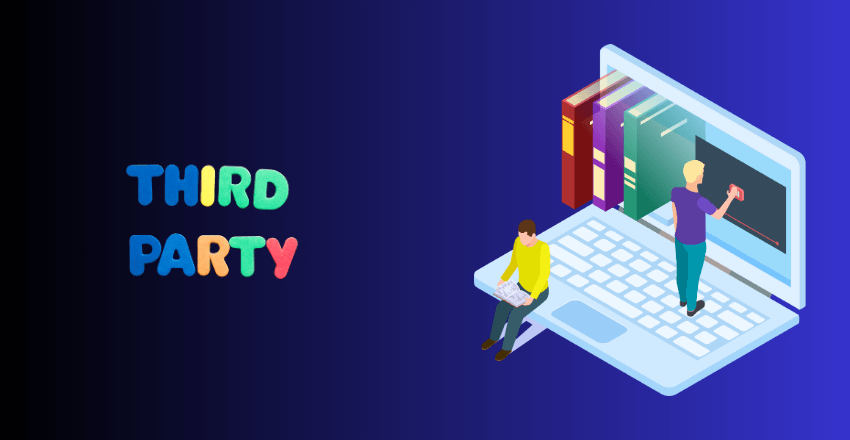
The ecosystem and availability of third-party libraries are crucial considerations when choosing a cross-platform framework. Both .NET MAUI and Flutter have expansive ecosystems with a range of libraries, plugins, and extensions available to enhance the functionality of applications built with them.
.NET MAUI offers libraries that provide access to native APIs and platform-specific features. The .NET MAUI Community Toolkit is a collection of libraries and helpers that provides essential functionalities like animations, behaviors, and converters. Additionally, the Xamarin Community Toolkit provides a range of open-source libraries and controls that can be used with .NET MAUI.
Flutter provides the Flutter SDK, which offers a comprehensive set of libraries covering a wide range of functionalities, from basic UI components to advanced features like analytics and machine learning. The Flutter community has also developed numerous plugins that provide access to native APIs and functions. The Dart Pub Package Manager offers a centralized location for developers to share and discover packages.
It’s noteworthy that .NET MAUI currently has fewer libraries compared to Flutter. However, the .NET development ecosystem has been around for a long time and is well-established, which could lead to a growing library of features in the future.
Learning Curve
Before deciding which framework to use, it is important to consider the learning curve associated with each. Developing with .NET MAUI and Flutter requires knowledge of the underlying programming languages, C# and Dart respectively. However, .NET MAUI has an advantage for .NET developers, as the framework utilizes familiar concepts and patterns from the .NET ecosystem.
Flutter has a steeper learning curve for developers who are not familiar with Dart or reactive programming concepts, but the framework provides extensive documentation and a large community to support the learning process. Flutter’s hot reload feature also allows for faster iteration during the development process, which can aid in the learning curve.
Regardless of the framework chosen, it is important to allocate sufficient time for learning and experimentation to ensure a strong foundation for development. Additionally, resources such as tutorials, sample code, and community forums can be helpful in supporting the learning process.
Industry Adoption
Both .NET MAUI and Flutter have gained popularity in the industry as cross-platform frameworks for building mobile and web applications. While Flutter has a larger developer community and has been around longer, .NET MAUI’s predecessor, Xamarin.Forms, has been used by many companies for developing cross-platform applications.
Some notable companies that have used .NET MAUI and Xamarin.Forms include UPS, Alaska Airlines, and Honeywell. These companies have benefited from the ability to build and deploy applications for multiple platforms with a single codebase, saving time and resources in the development process.
Flutter has also been adopted by various companies, including Google, Tencent, and BMW. Its popularity among developers is evident in the numerous applications built with Flutter that have received critical acclaim and commercial success.
Overall, both .NET MAUI and Flutter offer compelling options for cross-platform development, and their respective communities continue to grow and evolve.
Performance Optimization
Optimizing performance is crucial for any application, particularly for cross-platform ones that have to function seamlessly on multiple devices and platforms. Below are some tips and best practices for optimizing the performance of applications built with .NET MAUI and Flutter.
.NET MAUI Optimization
One of the main advantages of .NET MAUI is its ability to leverage the performance of native APIs to produce fast and responsive apps. To further optimize the performance of .NET MAUI applications, consider the following:
- Code optimization: Write optimized code that minimizes CPU usage and maximizes memory utilization. Avoid using loops and memory-intensive operations whenever possible.
- Caching: Implement caching mechanisms to reduce the number of requests made to the server for data and resources. Use in-memory or local storage caching for frequently-accessed data or resources.
- Asynchronous programming: Use asynchronous programming techniques to perform long-running or resource-intensive tasks in the background without affecting user experience. Adopt the async/await pattern to simplify asynchronous programming.
- Efficient resource handling: Optimize the use of resources such as images, videos, and audio files. Use compressed files whenever possible and avoid loading large files all at once.
Flutter Optimization
Flutter provides a number of tools and techniques for optimizing performance, such as:
- Code optimization: Use efficient coding techniques to minimize CPU usage and memory allocation. Avoid using large loops and operations that are resource-intensive.
- Widget optimization: Use the Flutter widget tree to efficiently build UI components. Avoid rebuilding the entire widget tree when only specific parts of the UI need to be updated.
- Rendering optimization: Use techniques such as caching and clustering to optimize the rendering of large, complex UI components. Implement lazy loading to defer the rendering of components until they are actually needed.
- Memory management: Use the Dart programming language, which includes a garbage collector to automatically free up memory that is no longer needed. Take advantage of the memory profiler tool to identify and optimize memory usage.
Remember that optimizing performance is an ongoing process that requires continuous monitoring and improvement. Use profiling and benchmarking tools to identify performance bottlenecks and use best practices and techniques to improve overall performance.
Choosing the Right Framework
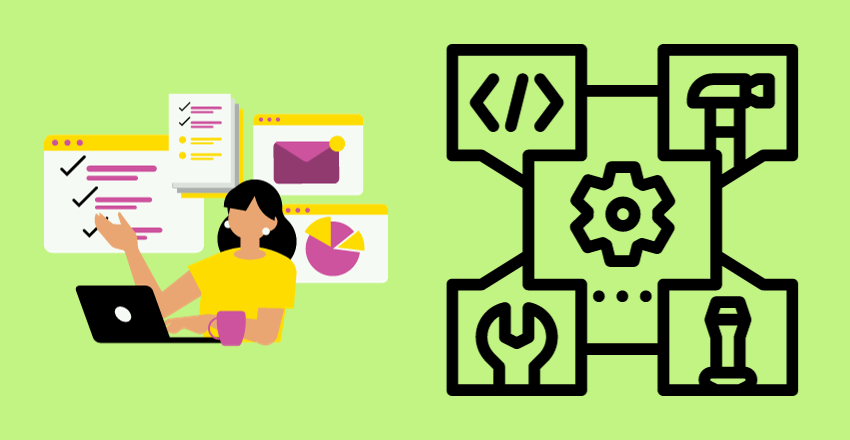
When deciding between .NET MAUI and Flutter, it’s essential to consider your project requirements and resources carefully. Making the right decision requires a balanced assessment of your team’s expertise, development timeline, and long-term maintainability. Here are some factors to consider when making your decision:
- Project requirements: Consider the features, functionalities, and user experience that your application requires. Evaluate how well each framework aligns with your specific needs.
- Team expertise: Assess the skills and experience of your development team. Which framework are they familiar with or have worked with before? It’s best to choose the framework that your team is comfortable with.
- Development timeline: How much time do you have for development? Consider the learning curve and the development workflow of each framework. Which one will enable you to develop and deploy your application within your timeline?
- Long-term maintainability: Evaluate the long-term maintainability of your application. Which framework offers better support, updates, and community-driven initiatives?
Ultimately, the decision of choosing the right framework depends on your project’s specific needs and resources. Take the time to evaluate each option carefully and consider collaborating with a team of experienced cross-platform app developers to ensure that you get the best results.
.NET MAUI vs Flutter: Decision-making Summary
After exploring the features, performance, development workflow, community support, platform compatibility, ecosystem, learning curve, and industry adoption of .NET MAUI and Flutter, we can conclude that both frameworks offer compelling advantages for building cross-platform applications.
.NET MAUI shines in its integration with the .NET ecosystem and its ability to create highly customized user interfaces. Flutter, on the other hand, offers a unique approach to building UIs using the widget tree and hot reload feature, which enables fast prototyping and iteration.
When making a decision between these two frameworks, consider your project requirements, team expertise, development timeline, and long-term maintainability. It’s also worth noting that both frameworks have robust communities and documentation, so finding support and resources won’t be a challenge for either option.
Ultimately, the decision between .NET MAUI and Flutter will depend on your goals, resources, and priorities for your project.
Additonal Resources
If you want to learn more about .NET MAUI and Flutter, there are plenty of tutorials and resources available online. Here are some useful links to get you started:
- .NET MAUI Tutorials: Microsoft’s official documentation is a good starting point for learning .NET MAUI. They have a variety of tutorials and resources available, including getting started guides, sample projects, and API references.
- Flutter Tutorials: Google’s official documentation is a comprehensive resource for learning Flutter. They offer a range of tutorials, videos, and sample code to help you get started.
- Forums: Both .NET MAUI and Flutter have active communities online. You can find help, guidance, and answers to your questions by participating in forums such as Stack Overflow or Reddit.
- Third-Party Libraries: There are a number of third-party libraries available for both .NET MAUI and Flutter. You can find these libraries on platforms such as the NuGet Gallery for .NET MAUI and the Flutter Packages repository for Flutter.
With these resources, you’ll be able to gain a deeper understanding of .NET MAUI and Flutter and start building your very own cross-platform applications.
About Hire Cross Platform
Hire Cross Platform is a leading provider of cross-platform app developers based in South America. Our team of experienced developers specializes in .NET MAUI, Flutter, and other cross-platform frameworks, delivering high-quality applications for clients around the world.
At Hire Cross Platform, we understand the importance of developing applications that work seamlessly across multiple platforms. Our developers are experts in creating applications that perform well on iOS, Android, web, and desktop platforms, ensuring that our clients’ apps reach the widest possible audience.
With Hire Cross Platform, clients can expect a seamless and efficient development process, with clear communication and regular updates throughout the project. Our developers work closely with each client to ensure that their project requirements are met and that the final product exceeds expectations.
If you’re looking for experienced cross-platform app developers, look no further than Hire Cross Platform. Contact us today to learn more about our services and how we can help bring your project to life.
External Resources
https://learn.microsoft.com/en-us/dotnet/maui/what-is-maui?view=net-maui-8.0
https://dotnet.microsoft.com/en-us/apps/maui
FAQ

Q: What is .NET MAUI?
A: .NET MAUI is a cross-platform framework developed by Microsoft.
Q: What is Flutter?
A: Flutter is a cross-platform framework developed by Google.
Q: How do .NET MAUI and Flutter compare in terms of features?
A: .NET MAUI and Flutter have common features such as UI components, layout systems, navigation, data binding, and integration with native APIs. However, there may be differences or unique features offered by each framework.
Q: How do .NET MAUI and Flutter compare in terms of performance?
A: The performance of .NET MAUI and Flutter can be compared in factors such as startup time, rendering speed, and memory usage.
Q: What is the development workflow like in .NET MAUI and Flutter?
A: The development workflow in both .NET MAUI and Flutter involves coding, debugging, and testing. There may be differences or advantages in the development process of each framework.
Q: What is the level of community support and documentation available for .NET MAUI and Flutter?
A: The size and activity of the developer communities, availability of tutorials and resources, and the level of support provided by the framework maintainers can be compared for .NET MAUI and Flutter.
Q: Which platforms are supported by .NET MAUI and Flutter?
A: Both .NET MAUI and Flutter are compatible with major platforms such as iOS, Android, and web. However, there may be limitations or differences in platform-specific features or functionalities.
Q: What is the ecosystem and availability of third-party libraries like for .NET MAUI and Flutter?
A: The range of libraries, plugins, and extensions available for .NET MAUI and Flutter can be compared. There may be limitations or differences in the availability of libraries.
Q: How does the learning curve compare for .NET MAUI and Flutter?
A: The level of prior knowledge or experience required to start development with .NET MAUI and Flutter can be evaluated. There may be differences or resources available for beginners in terms of ease of adoption.
Q: What is the industry adoption of .NET MAUI and Flutter?
A: The popularity of .NET MAUI and Flutter among developers and notable companies or projects that have used them can be explored. Insights regarding the adoption of cross-platform frameworks in the industry can also be discussed.
Q: What are the tips for performance optimization in .NET MAUI and Flutter?
A: Tips and best practices for optimizing the performance of applications built with .NET MAUI and Flutter can be provided. Techniques such as code optimization, caching, asynchronous programming, and efficient resource handling can be discussed.
Q: What factors should be considered when choosing between .NET MAUI and Flutter?
A: Factors such as project requirements, team expertise, development timeline, and long-term maintainability should be considered when choosing between .NET MAUI and Flutter. Alignment with specific needs and goals should be assessed.
William is a highly accomplished technical author specializing in cross-platform app development. With a rich background in the tech industry, he has worked at prestigious companies like Uber and Facebook, where he honed his skills as an iOS developer since 2009. Throughout his career, William has been an advocate for leveraging frameworks like React Native and Xamarin to create innovative and efficient cross-platform mobile apps.
Having pursued a degree in Computer Science and Mathematics at Caltech, William is equipped with a strong educational foundation. Currently residing in LA with his two daughters, he finds solace in exploring the scenic hills through hiking. Passionate about knowledge sharing, William not only builds cutting-edge applications but also takes pleasure in teaching students how to develop their own cross-platform mobile apps. His expertise, combined with his dedication to empowering others, makes him an invaluable asset in the field of app development.







